Sodium L-aspartate
- CAS NO.:5598-53-8
- Empirical Formula: C4H5MgNO4
- Molecular Weight: 155.39
- MDL number: MFCD00082327
- EINECS: 227-012-0
- SAFETY DATA SHEET (SDS)
- Update Date: 2024-11-05 19:05:58

What is Sodium L-aspartate?
Chemical properties
colorless to white columnar crystal, or white crystalline powder. The taste is light and the taste threshold is 0.16%. Melting point 140.4 ℃. Soluble in water (66.7%, 20℃), insoluble in ethanol. Natural products exist in sugar beets, milk proteins, etc.
The Uses of Sodium L-aspartate
Sodium L-aspartate has excellent freshness and antiseptic effects, and is widely used in food industry as a freshness and preservative, and can replace monosodium glutamate. It is often used in in various types of curry, vinegar, canned fish, canned vegetables, bread, biscuits, beverages, etc. as flavor improver combination with natural flavorings, sodium glutamate, glycine or sodium citrate, and sodium succinate .
Preparation
A method for preparing sodium L-aspartate by biological enzyme: mixing fumaric acid, sodium hydroxide and ammonia in a molar concentration ratio of 1:1:1 to 1:2:2, and preparing It is a substrate solution of pH8.0~pH9.0, and then the fermentation broth containing aspartase is introduced into the substrate solution, and the volume ratio of the substrate solution to the fermentation broth is 16:1~16: 3. Under normal pressure conditions, react for 12 to 20 hours at a temperature of 37°C to 40°C, and obtain L-aspartate sodium through separation.
Properties of Sodium L-aspartate
| storage temp. | Keep in dark place,Inert atmosphere,Room temperature |
| form | Solid |
| color | White to off-white |
Safety information for Sodium L-aspartate
| Signal word | Danger |
| Pictogram(s) |
 Skull and Crossbones Acute Toxicity GHS06 |
| GHS Hazard Statements |
H301:Acute toxicity,oral H311:Acute toxicity,dermal H331:Acute toxicity,inhalation |
| Precautionary Statement Codes |
P261:Avoid breathing dust/fume/gas/mist/vapours/spray. P264:Wash hands thoroughly after handling. P264:Wash skin thouroughly after handling. P270:Do not eat, drink or smoke when using this product. P271:Use only outdoors or in a well-ventilated area. P280:Wear protective gloves/protective clothing/eye protection/face protection. P310:Immediately call a POISON CENTER or doctor/physician. P330:Rinse mouth. P361:Remove/Take off immediately all contaminated clothing. P302+P352:IF ON SKIN: wash with plenty of soap and water. P304+P340:IF INHALED: Remove victim to fresh air and Keep at rest in a position comfortable for breathing. P405:Store locked up. P403+P233:Store in a well-ventilated place. Keep container tightly closed. P501:Dispose of contents/container to..… |
Computed Descriptors for Sodium L-aspartate
New Products
(S)-3-Aminobutanenitrile hydrochloride 4-Methylphenylacetic acid N-Boc-D-alaninol N-BOC-D/L-ALANINOL Tert-butyl bis(2-chloroethyl)carbamate 3-Morpholino-1-(4-nitrophenyl)-5,6-dihydropyridin- 2(1H)-one Furan-2,5-Dicarboxylic Acid Tropic acid 1-Bromo-3,5-Di-Tert-Butylbenzene S-2-CHLORO PROPIONIC ACID ETHYL ISOCYANOACETATE 2-Bromo-1,3-Bis(Dimethylamino)Trimethinium Hexafluorophosphate 4-IODO BENZOIC ACID 3-NITRO-2-METHYL ANILINE 1-(2,4-DICHLOROPHENYL) ETHANAMINE (2-Hydroxyphenyl)acetonitrile 4-Bromopyrazole 2-(Cyanocyclohexyl)acetic acid 4-methoxy-3,5-dinitropyridine 1-(4-(aminomethyl)benzyl)urea hydrochloride 2-aminopropyl benzoate hydrochloride diethyl 2-(2-((tertbutoxycarbonyl)amino) ethyl)malonate tert-butyl 4- (ureidomethyl)benzylcarbamate Ethyl-2-chloro((4-methoxyphenyl)hydrazono)acetateRelated products of tetrahydrofuran
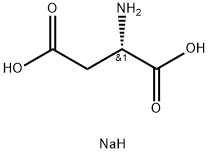
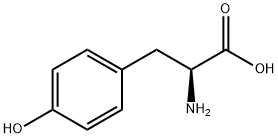
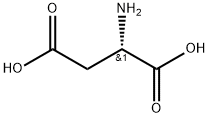
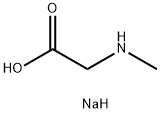


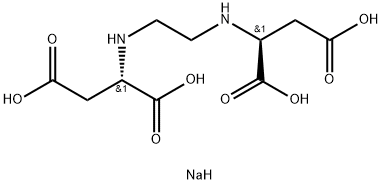

You may like
-
 Sodium l-aspartate 95% CAS 5598-53-8View Details
Sodium l-aspartate 95% CAS 5598-53-8View Details
5598-53-8 -
 Monosodium L-aspartate 98.00% CAS 5598-53-8View Details
Monosodium L-aspartate 98.00% CAS 5598-53-8View Details
5598-53-8 -
 1975-50-4 98%View Details
1975-50-4 98%View Details
1975-50-4 -
 2-HYDROXY BENZYL ALCOHOL 98%View Details
2-HYDROXY BENZYL ALCOHOL 98%View Details
90-01-7 -
 2-Chloro-1,3-Bis(Dimethylamino)Trimethinium Hexafluorophosphate 221615-75-4 98%View Details
2-Chloro-1,3-Bis(Dimethylamino)Trimethinium Hexafluorophosphate 221615-75-4 98%View Details
221615-75-4 -
 61397-56-6 CIS BROMO BENZOATE 98%View Details
61397-56-6 CIS BROMO BENZOATE 98%View Details
61397-56-6 -
 14714-50-2 (2-Hydroxyphenyl)acetonitrile 98+View Details
14714-50-2 (2-Hydroxyphenyl)acetonitrile 98+View Details
14714-50-2 -
 118753-70-1 98+View Details
118753-70-1 98+View Details
118753-70-1